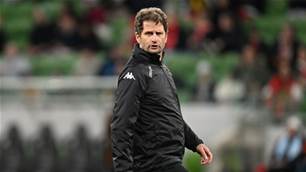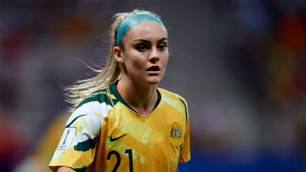As the rest of the world pushes ahead in women's football, Australia is starting to lag behind.
Attending the first ever Global Women's Football Convention in Paris ahead of the FIFA Women's World Cup, Independent Chair of the FFA Women’s Football Council Ros Moriarty had the chance to see where Australia was placed amongst other women's football nations.
Despite making steps towards better supporting female footballers and the recent landmark Collective Bargaining Agreement (CBA) which will see W-League players paid the same minimum hourly rate as A-League players, Australia is falling behind the rest of the world.
"I think we're actually losing ground," Moriarty said
"I think that there is a new focus and strong leadership from FIFA and within Europe, the UK, and US and it's definitely been on display on the field during this World Cup.
"The FA has undertaken a very intensive three year period with very strong leadership and focus throughout the organisation on women's football."
That focus has seen seven new sponsorships being signed by FA in the last nine months. Specifically, with Barclays, which is a multi-million-pound multi-year deal as the title sponsors for the FA Women's Super League.
The deal also supports the FA Girls’ Football School Partnerships, which is a nationwide scheme to help develop girls’ access to football at school.
It was a landmark deal for the commercial development of English women’s football.
When asked what Australia needs to do to match nations such as the US or the UK, it was a relatively simple answer.
"I think it's partly learning from a global situation where there are potentially more resources on offer, more opportunities to play and there's more football," Moriarty said.
"In Australia, we need a timelined, benchmarked and measured roadmap, a 10 year one that is specific to growing women's football across every part of the game.
"I think moving from something that's perhaps aspirational to this evidence-driven plan is really what we need to see to start creating the gains then ticking them off so that we can actually move towards some results."
Some may ask 'Isn't there already a women's plan in place?'
And there is.
In 2018, FFA looked to build on the Women’s Football Strategy implemented from 2014 to create new opportunities for clubs, member federations, governments, commercial partners, community organisations and the media to partner with women’s football.
The plan aligned with 2023 Women’s World Cup bid to leave a legacy on the sport.
It also addressed critical issues at community levels including coaching, facilities, career pathways, commercial growth and the achievement of a 50-50 gender split in participation while at the professional level, the plan charted a course to close the gender pay gap, build a fully professional W-League and maintain the Matildas’ current position in world football.
However, this plan didn't drill down to any benchmarks, KPIs or measurements that need to be achieved to ensure Australia is on the correct path.
While Moriarty believes the plan is a critical aspect of helping grow Australian women's football, there is also another important area to focus on.
"I think the biggest driver is going to be leadership, and it's looking for leadership across the game to focus on women's football, recognising what's being said globally, which is that women's football is the game's big growth area," she said.
"But we need leadership within Australia within football, to recognise that, support it, and make it happen.
"We need everyone involved in football to see women's football as a really critical part of the development of the game. That's how it's being seen globally. I think we need to see it more that way."
Stay tuned for the final installment on Sunday when we look at what is next for women's football in Australia.
Related Articles

'Timing not right': Montemurro's verdict on Matildas vacancy

Matildas: 'Fourth at the Olympics is honestly the worst place you could come'
.jpg&h=172&w=306&c=1&s=1)













